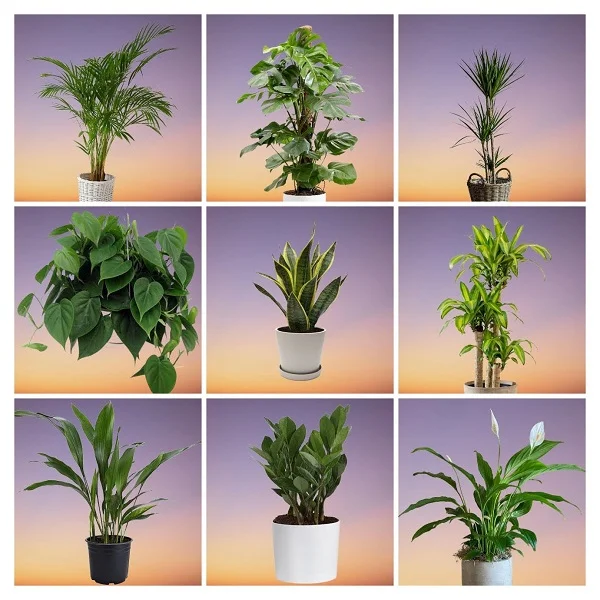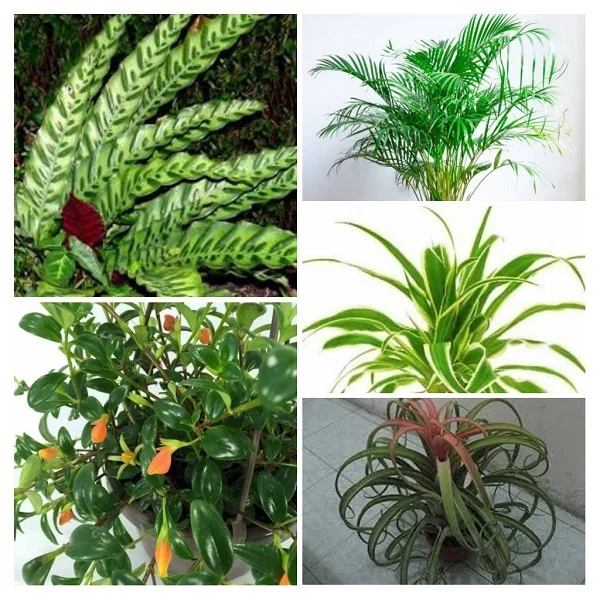19 Hard to Kill Indoor Plants (Near-impossible to Kill Plants)
Some links in this post may be affiliate links
If you are one who normally kills indoor plants or are too busy and have very little time to care for your plants or you just want hassle-free plants, these hard to kill plants are perfect for you.
The hard to kill indoor plants are those plants that can tolerate some level of neglect and are especially ideal for the forgetful and busy plants parent.
These near-impossible to kill houseplants are hardy, easily adapt to low light conditions, do well in average room humidity and tolerate some level of neglect.
We have outlined for you herebelow 19 best hard to kill indoor plants that will thrive in your home.
19 Hard to Kill Plants Ideal for Beginners
The hard to kill or near-impossible to kill plants are Snake Plants, Cast Iron Plant, Pothos, Monstera deliciosa, Spider Plant, English Ivy, Jade Plant, Rubber Plants, Ponytail Palm among others.
1. Snake Plants (Dracaena trifasciata)

Snake Plant also called Mother-in-law's Tongue or Saint George's Sword Plant is a slow growing, low maintenance and extremely hardy (almost indestructible) plant.
Dracaena trifasciata can withstand low light, dry air, draughts and periods of dryness. The only drawback for this plant is root-rot which is brought about by waterlogging.
Mother-in-law's Tongue is also a good indoor air cleaner which removes formaldehyde, benzene, xylene, toulene and trichloroethylene from indoor air.
2. Cast Iron Plant (Aspidistra elatior)
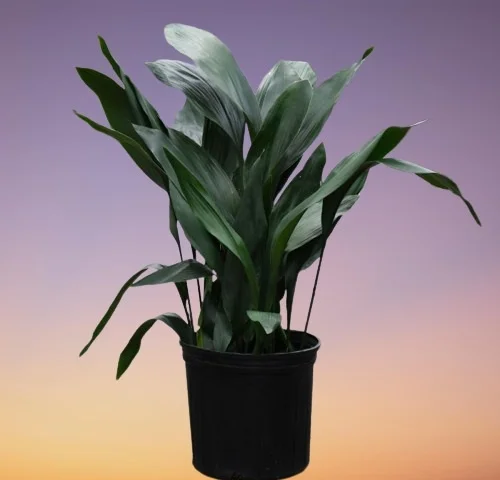
Cast Iron Plant is one of the highly tolerant plants, almost an indestructible plant that easily adapts to varying indoor growing conditions.
Cast Iron Plant is slow growing and can withstand periods of dryness at the roots if the temperature is not too high.
Cast Iron Plant will withstand both pollution and neglect if kept away from direct sunlight. The plant is very tolerant to shade and can withstand some level of neglect.
3. Spider Plant (Chlorophytum comosum)
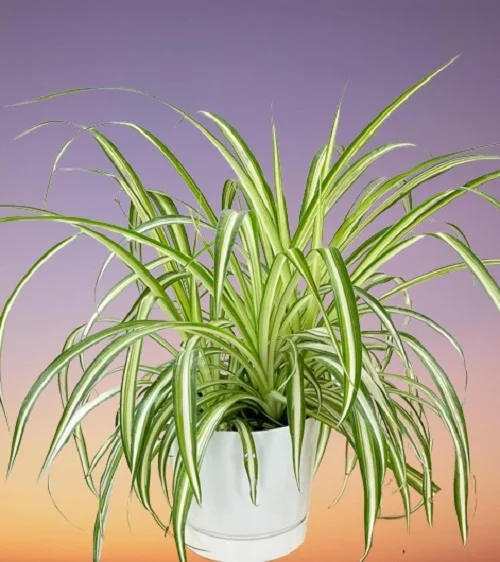
Spider Plant also called Airplane Plant, Spider Ivy or Ribbon Plant is extremely adaptable and will grow in hot or cool rooms, in sun or shade and will withstand dry air conditions.
Spider Plant is a popular plant for hanging baskets. It is a fast-growing and easy-care plant which easily propagates from the numerous plantlets borne on the stems as the plant matures.
Spider Plant is also a good indoor air cleaner and gets rid of benzene, formaldehyde, xylene and toulene from indoor air.
4. Pothos (Scindapsus aureus)
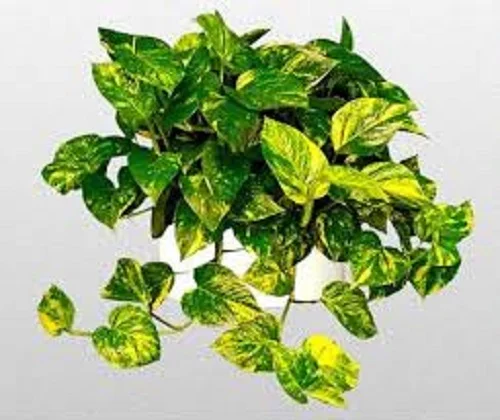
Pothos also called Money Plant or Devil's Ivy has a high ability to withstand draught and excess moisture and generally pest resistant.
Pothos does well in the hardest of conditions. If kept away from direct sunlight and with moderate watering, Pothos will thrive.
Devil's Ivy can be treated as a trailer or climber, reaching up to 6 feet or more under good conditions. A moss stick or a hanging basket are ideal for growing this plant.
5. Japanese Aralia (Fatsia japonica)

Japanese Aralia also called Paperplant or Glossy-leaf Paper Plant is a popular indoor plant with a tough constitution.
Fatsia japonica an excellent stand alone plant, growing to a height of 4 feet or more which grows quickly, is extremely durable and accepts a wide range of growing conditions.
Paperplant has been shown to be a good indoor air cleaner, which effectively removes formaldehyde gas from indoor air.
6. Swiss Cheese Plant (Monstera deliciosa)

Swiss Cheese Plant also called Mexican Breadfruit or Windowleaf Plant is a favorite indoor plant whose large, deeply-cut, perforated leaves are a sight to behold.
Monstera deliciosa easily adapts to a wide range of growing conditions. It will thrive even in the poor conditions if given enough light and moisture.
Swiss Cheese Plant is ideal as a stand alone plant for occupying large empty spaces. To produce an upright plant, provide a moss stick to support it and also push the aerial roots into the soil.
Read more on how to grow and care for Swiss Cheese Plant
7. Asparagus Fern (Asparagus plumosus)

Asparagus Fern also called Asparagus Grass, Lace Fern or Ferny Asparagus is not a true fern and is much easier to grow than true ferns.
Asparagus Grass adapts well to a wide variation in light, heat and frequency of watering. In other words it can withstand some level of neglect.
The cascading growth habit makes Asparagus plumosus ideal for a hanging basket where the branches can cascade downwards beautifully.
Learn more on how to grow and care for Asparagus Fern
8. Heartleaf Philodendron (Philodendron scandens)
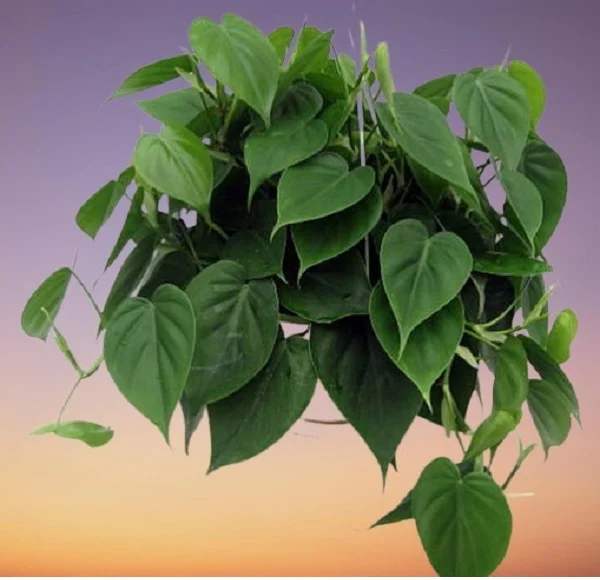
Heartleaf Philodendron also called Sweetheart Plant is a popular plant due to its ease of care and ability to withstand neglect and poor growing conditions.
The Heartleaf Philodendron is ideal for a hanging basket and can also be grown as a climber. Firm support for the stems needs to be provided for the climber as it can become heavy.
Sweetheart Plant is also a good indoor air cleaner which gets rid of trichloethylene from indoor air.
9. ZZ Plant (Zamioculcas zamiifolia)
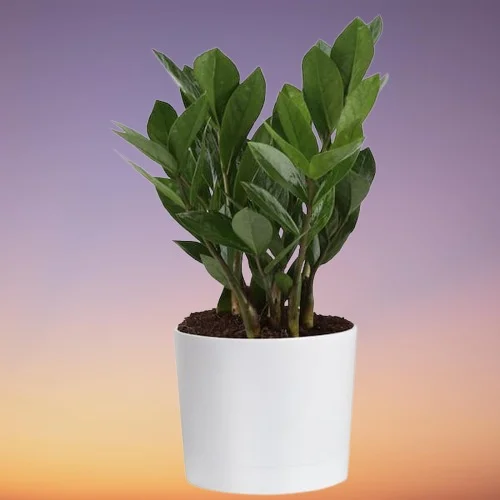
ZZ Plant also called Zanzibar Gem, Zuzu Plant, Aroid Palm or Emerald Palm is a highly tolerant plant with attractive glossy foliage and is ideal for small spaces.
Zanzibar Gem is highly tolerant to low light, dry conditions but does not like direct sunlight. The plant is considered to be amongst the hard to kill plants.
The foliage in Zuzu Plant contains unusually high content of water up to 90% and has an individual leaf longevity of at least 6 months.
10. English Ivy (Hedera helix)
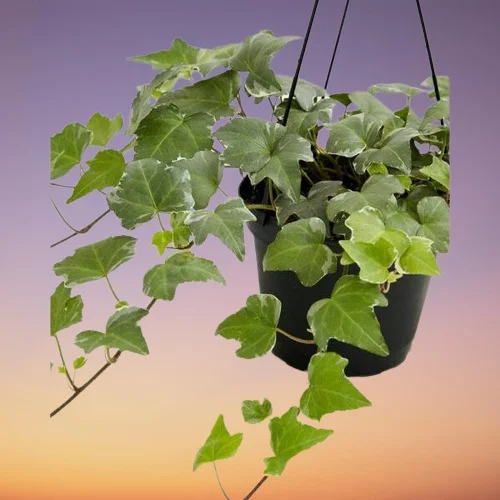
English Ivy is easy to grow and adapts easily to a wide range of growing conditions. It is a hardy plant that will not die from a few days neglect.
The attractive English Ivy is useful as a screen for the unattractive spots, as a hanging basket plant or as a climber on a trellis or on a moss-stick.
Hedera helix is also a good indoor air cleaner which gets rid of common VOCs like benzene, formaldehyde, xylene, toulene and trichloroethylene from indoor air.
11. Chinese Evergreen (Aglaonema)
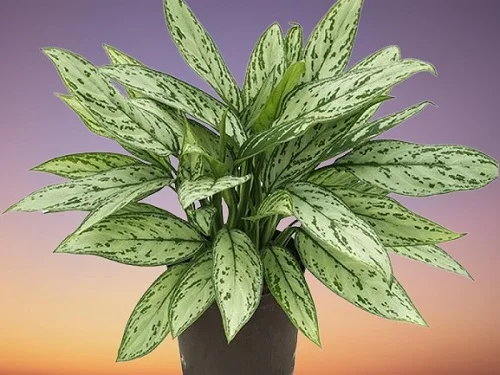
Chinese Evergreens are popular plants on account of their spectacular foliage, ease of care, air cleaning properties and ability to adapt to indoor growing conditions.
Being slow growers, Aglaonemas require minimal feeding and infrequent repotting and are perfect for limited spaces. They are good indoor air cleaners effective in the removal of benzene and formaldehyde.
Chinese Evergreens are ideal for the poorly lit spaces especially the all green varities are very tolerant to low light or shade conditions.
12. Madagascar Dragon Tree (Dracaena marginata)

Madagascar Dragon Tree is a colorful plant that easily adapts to a wide range of indoor growing conditions and is also a good indoor air cleaner.
Dracaena marginata is a tough, drought-resistant plant with aggressive root system and is considered to be one of the hard to kill plants.
Madagascar Dragon Tree requires bright indirect light, average warmth and moderately moist, rich, well-drained soil It has no need for high humidity.
Read more on how to grow and care for Madagascar Dragon Tree
12. Beaucarnea recurvata (Ponytail Palm)
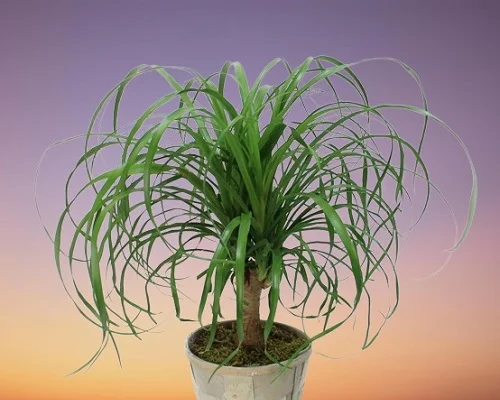
Ponytail Palm also called Elephant Foot is an easy-care plant that does not require a lot of attention which makes it ideal for a beginner or the forgetful plant parent.
Beaucarnea recurvata has a large, swollen bulb that stores water which is is topped by a plume of long strap-like leaves which give this plant its common name.
Elephant Foot is a hardy, slow-growing succulent which requires very bright light with some direct sunlight and moderately moist free-draining soil. It does not like soggy soil.
13. Spineless Yucca (Yucca gigantea)

Spineless Yucca also called Blue-stem Yucca, Giant Yucca or Yucca Cane can grow in a variety of soils and is drought-tolerant. It grows best in a hot semi-arid climate, so the plants are susceptible to root-rot if overwatered.
Yucca gigantea is an ideal False Palm for a hallway or large space in which a woody trunk bears a crown of long, leathery, strap-like, spineless leaves and white bell-shaped flowers may appear on mature plants.
Giant Yucca requires a deep, well-drained container and a well-lit spot with some sunshine inorder to thrive.
14. Jade Plant (Crassula ovata)

Jade Plant is a popular succulent plant with thick branches and thick, shiny and smooth, yellowish-green leaves which grow in opposite pairs along the branch and it can withstand a great deal of neglect and mismanagement and is easy to grow even for a beginner.
Jade Plant like Crassula perforata (String of Buttons Plant), Crassula arborescens (Silver Dollar Jade), Crassula brevifolia (Crassula pearsonii) and Crassula capitella 'Campfire' can survive a considerable period of time without being watered as the fleshy leaves and stems store water. They are some of the best hard to kill plants.
Read more on how to grow and care for Jade Plant
15. Rubber Plant (Ficus elastica)

Rubber Plant also called Rubber Fig, Rubber Tree, Rubber Bush, Indian Rubber Tree or Indian Rubber Bush is a popular tree-like plant that is easy to grow and easily adaptable to indoor growing conditions.
Ficus elastica has a high tolerance to drought conditions. When provided with bright light and fertile, moderately moist soil, the plant will thrive.
Rubber Plant is also a good air cleaner which gets rid of formaldehyde from indoor air.
16. Silver Inch Plant (Tradescantia zebrina)

Silver Inch Plant is an easy-care plant that will withstand a wide range of growing conditions and easily propagates; just a node of this plant will sprout into a beautiful plant in no time.
Tradescantia zebrina bears glistened, fleshy leaves which are multicolored above where the surface color is bluish-green, banded with silver and edged in purple.
Silver Inch Plant grows best under bright, indirect light away from direct sunlight, average warmth and moderately moist, fertile, well-drained soil. It has no need for high humidity.
17. Baby Rubber Plant (Peperomia obtusifolia)
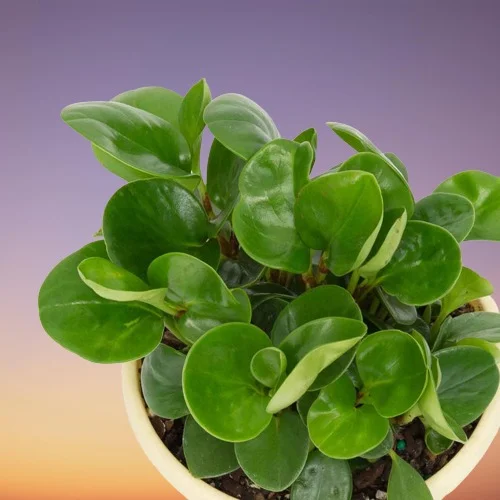
Baby Rubber Plant also called Pepper Face Plant or American Rubber Plant is a compact upright growing Peperomia with cupped leathery leaves which resembles a rubber plant and hence its common name.
American Rubber Plant is a hardy plant that will thrive even when the growing conditions are less than perfect. It does not require too frequent watering but needs bright light away from direct sunshine.
Pepper Face Plant grows best bright indirect light, moderately warm and humid conditions and moderately moist, fertile, well-drained soil. It has no need for high humidity.
Read more on how to grow and care for Baby Rubber Plant
18. Haworthia Plants

Haworthia Plants have firm, tough, fleshy leaves, usually dark-green in color while others are softer and contain leaf windows with translucent panels through which sunlight can reach internal photosynthetic tissues.
Haworthia are interesting plants in that, when stressed like when deprived of water, their color can change to reds and purple. If deprived of nitrogen the leaves become paler.
Haworthia Plants thrive in bright light with some direct sunlight and slightly moist, fertile, well-drained soil.
Read more on how to grow and care for Haworthia Plants
19. Aloe Plants
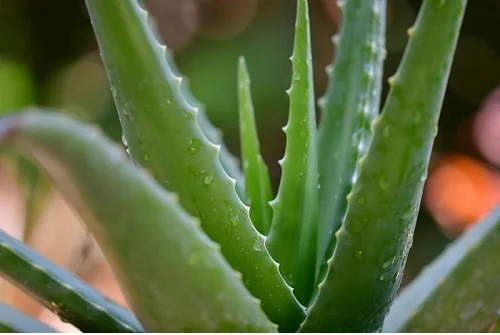
Aloes are low maintenance succulent plant which form a stemless rosettes of fleshy leaves and tubular, yellow, orange, pink or red and are borne , densely clustered and pendant at the apex of simple or branched leafless stems.
Aloe Plants are easy-care plants which come in all shapes and sizes. There are numerous species of Aloes and a few are popular as indoor plants.
Aloe Plants thrive in bright light with some direct sunlight, average warmth away from drafts and moderately moist, rich, well- drained soil.
Read more on how to grow and care for Aloe Plants

